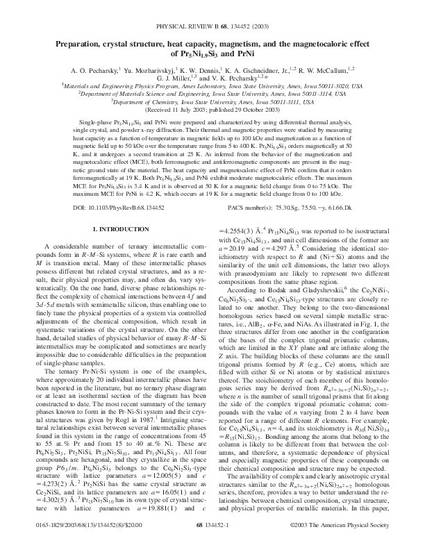
Single-phase Pr5Ni1.9Si3 and PrNi were prepared and characterized by using differential thermal analysis, single crystal, and powder x-ray diffraction. Their thermal and magnetic properties were studied by measuring heat capacity as a function of temperature in magnetic fields up to 100 kOe and magnetization as a function of magnetic field up to 50 kOe over the temperature range from 5 to 400 K. Pr5Ni1.9Si3 orders magnetically at 50 K, and it undergoes a second transition at 25 K. As inferred from the behavior of the magnetization and magnetocaloric effect (MCE), both ferromagnetic and antiferromagnetic components are present in the magnetic ground state of the material. The heat capacity and magnetocaloric effect of PrNi confirm that it orders ferromagnetically at 19 K. Both Pr5Ni1.9Si3 and PrNi exhibit moderate magnetocaloric effects. The maximum MCE for Pr5Ni1.9Si3 is 3.4 K and it is observed at 50 K for a magnetic field change from 0 to 75 kOe. The maximum MCE for PrNi is 4.2 K, which occurs at 19 K for a magnetic field change from 0 to 100 kOe.
Available at: http://works.bepress.com/gordon-miller/80/

This article is from Physical Review B 68 (2003): 1, doi:10.1103/PhysRevB.68.134452. Posted with permission.